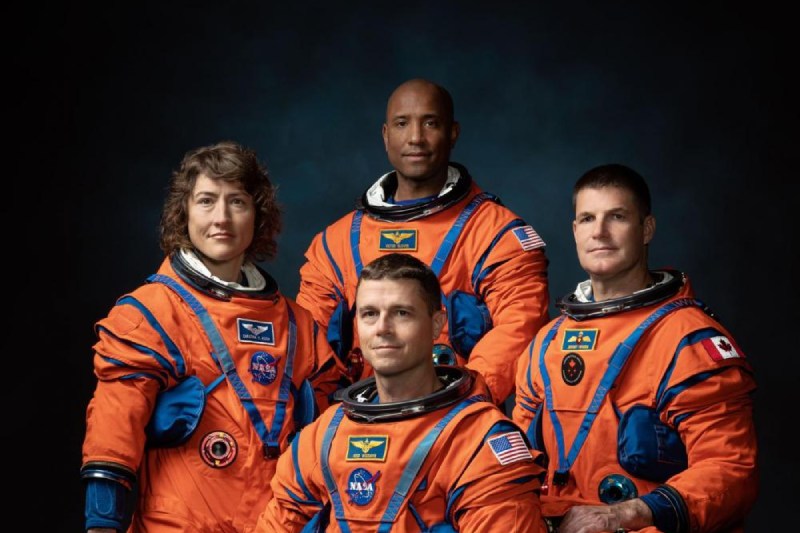Testing for the Artemis 2 Orion Spacecraft Begins in Advance of the 2025 Astronaut Lunar Mission

Before putting people on board, NASA’s next manned lunar spacecraft conducted a single, tiny jump into an altitude chamber for critical testing.
No sooner than September 2025, the Orion spacecraft for Artemis 2 is scheduled to fly around the moon with four people; however, NASA engineers want to make sure the vessel is prepared for the mission first.
The NASA Kennedy Space Center is conducting tests in a vacuum chamber starting on Wednesday, April 10, to evaluate Orion for “electromagnetic interference and electromagnetic compatibility,” according to a statement from NASA officials. Prior to the major launch day, the goal is to ensure that the spacecraft can continue operating as intended in these fields, which are both spacecraft-generated and space-generated.
NASA commander Reid Wiseman, NASA pilot Victor Glover (becoming the first Black person to leave low Earth orbit, or LEO), NASA mission specialist Christina Koch (becoming the first woman to go beyond LEO), and Canadian Space Agency mission specialist Jeremy Hansen (becoming the first non-American to accomplish the feat) are the four Artemis 2 astronauts who will fly around the moon aboard Orion.
Their spacecraft is currently located inside a chamber with a lot of lunar history at KSC’s Neil A. Armstrong Operations and Checkout Building. In 1968 and 1972, NASA officials said that it was used to “test environmental and life support systems on the lunar and command modules during the Apollo program,” which sent nine astronaut crews to the moon.
Orion is located in the west altitude chamber at KSC, which was updated to “test the spacecraft in a vacuum environment that simulates an altitude of up to 250,000 feet (76.2 km),” according to a NASA statement.
On April 4, technicians used a recently installed 30-ton crane in the facility to hoist Orion into that chamber. This crane is capable of moving the stacked Orion crew and service modules into the chamber, opening and closing the chamber lid, and safely transferring the spacecraft in the building’s high bay.
Although Orion spacecraft have made two previous space flights, this mission will be the first to carry humans. Additionally, new systems like life support will be tested. (The spacecraft model has already completed two missions: a short visit to Earth orbit in 2014 and the unmanned Artemis 1 mission to lunar orbit in late 2022).
After the altitude chamber, Orion on Artemis 2 has more work ahead of him. After that, it will be moved to the same KSC building’s Final Assembly and Systems Testing zone. Subsequently, NASA stated that additional altitude testing will take place “to conduct a test that simulates as close as possible the conditions in deep space vacuum.” These experiments at altitude might start as early as this summer.
The larger crewed Artemis mission, which aims to send humans back to the moon with Artemis 3 as early as 2026, will begin with Artemis 2. Technical difficulties caused both missions to be delayed in January 2024; Artemis 2 was delayed by approximately nine months, and Artemis 3 is expected to take an additional year.
Eventually, a settlement near water resources on the moon’s south pole is planned under the NASA-led Artemis program.
A portion of the 35 nations that have signed the Artemis Accords, including Canada, are supplying hardware for lunar missions as part of their commitment to peaceful space exploration guidelines overseen by NASA. NASA and Japan stated on Wednesday (April 10) that Japan, another signatory to Artemis, committed to a pressurized lunar rover for astronauts and will be the first nation other than the United States to land an astronaut on the moon.